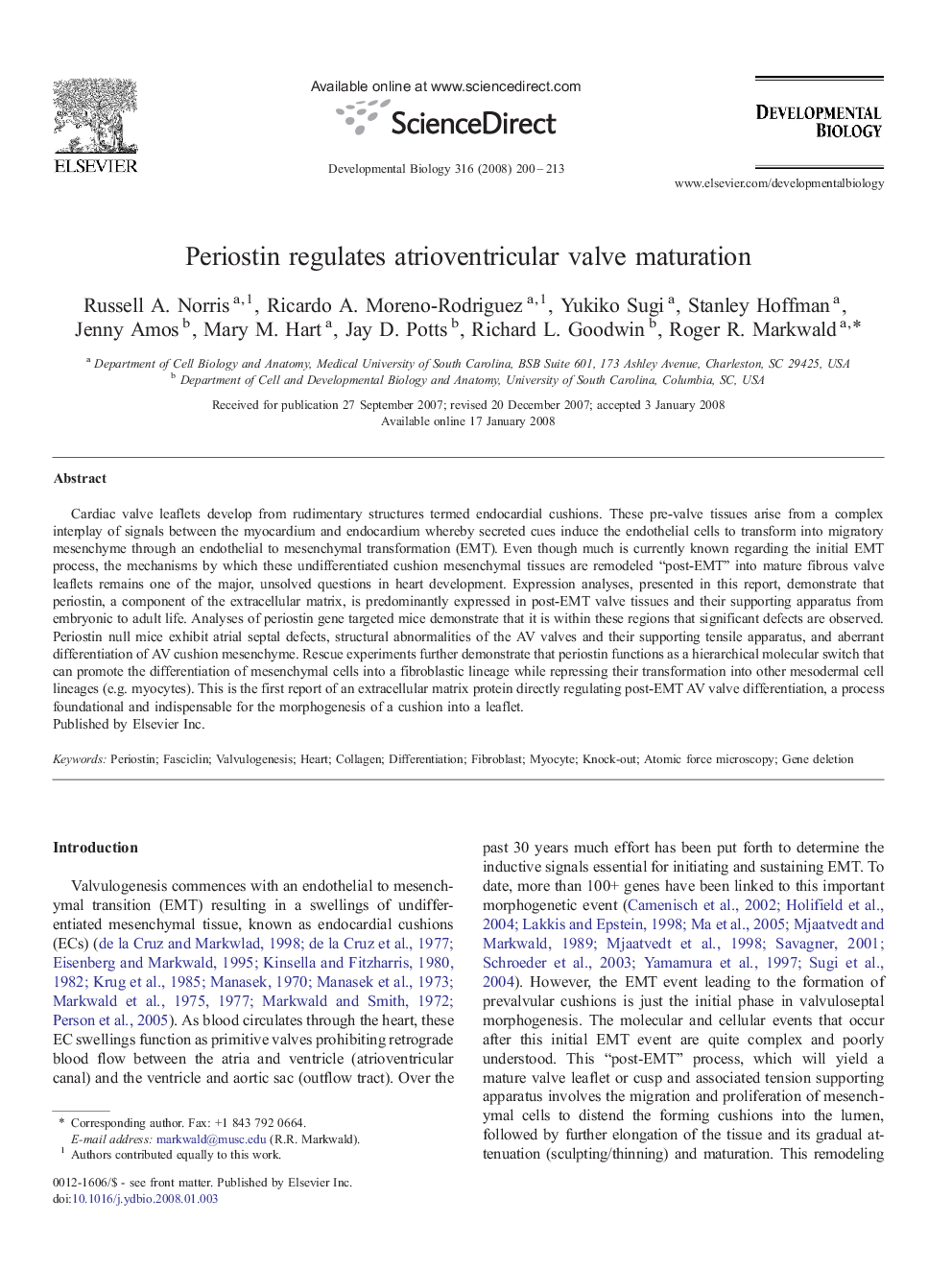| Article ID | Journal | Published Year | Pages | File Type |
|---|---|---|---|---|
| 10933711 | Developmental Biology | 2008 | 14 Pages |
Abstract
Cardiac valve leaflets develop from rudimentary structures termed endocardial cushions. These pre-valve tissues arise from a complex interplay of signals between the myocardium and endocardium whereby secreted cues induce the endothelial cells to transform into migratory mesenchyme through an endothelial to mesenchymal transformation (EMT). Even though much is currently known regarding the initial EMT process, the mechanisms by which these undifferentiated cushion mesenchymal tissues are remodeled “post-EMT” into mature fibrous valve leaflets remains one of the major, unsolved questions in heart development. Expression analyses, presented in this report, demonstrate that periostin, a component of the extracellular matrix, is predominantly expressed in post-EMT valve tissues and their supporting apparatus from embryonic to adult life. Analyses of periostin gene targeted mice demonstrate that it is within these regions that significant defects are observed. Periostin null mice exhibit atrial septal defects, structural abnormalities of the AV valves and their supporting tensile apparatus, and aberrant differentiation of AV cushion mesenchyme. Rescue experiments further demonstrate that periostin functions as a hierarchical molecular switch that can promote the differentiation of mesenchymal cells into a fibroblastic lineage while repressing their transformation into other mesodermal cell lineages (e.g. myocytes). This is the first report of an extracellular matrix protein directly regulating post-EMT AV valve differentiation, a process foundational and indispensable for the morphogenesis of a cushion into a leaflet.
Keywords
Related Topics
Life Sciences
Biochemistry, Genetics and Molecular Biology
Cell Biology
Authors
Russell A. Norris, Ricardo A. Moreno-Rodriguez, Yukiko Sugi, Stanley Hoffman, Jenny Amos, Mary M. Hart, Jay D. Potts, Richard L. Goodwin, Roger R. Markwald,
